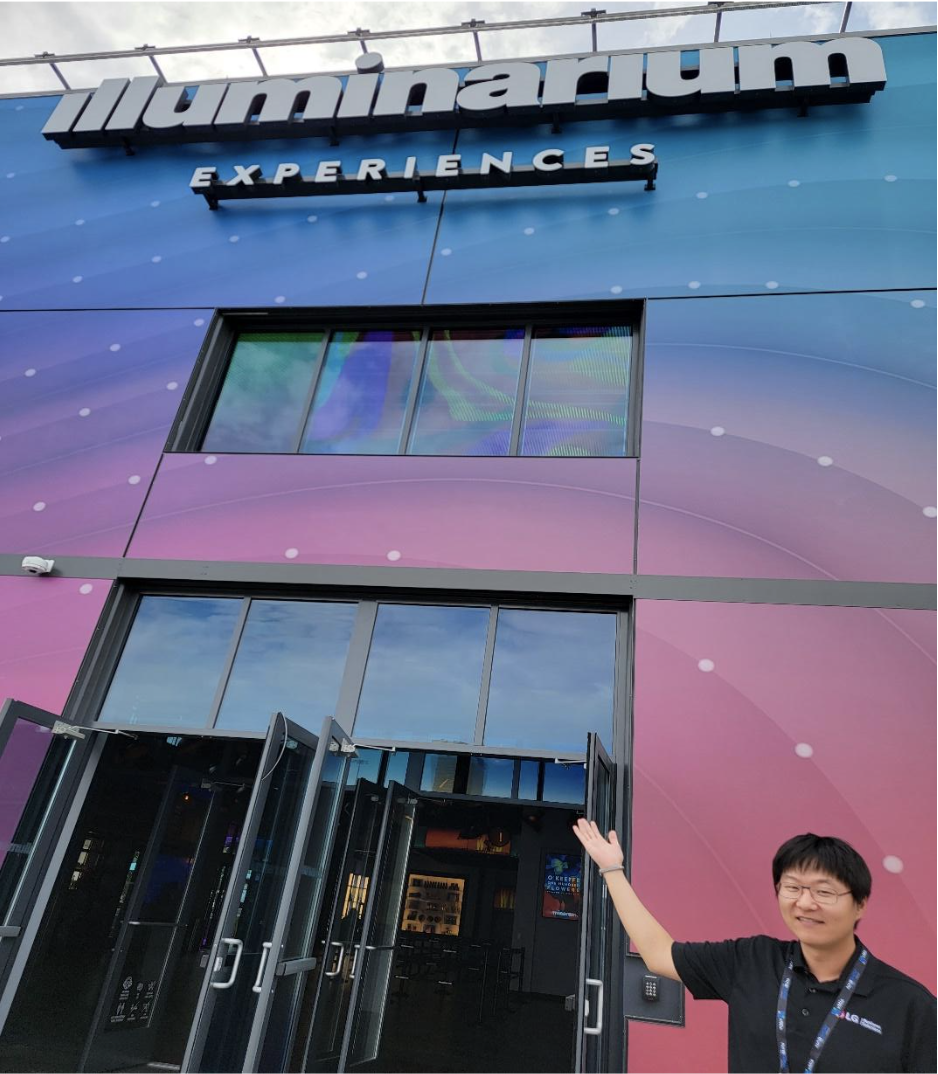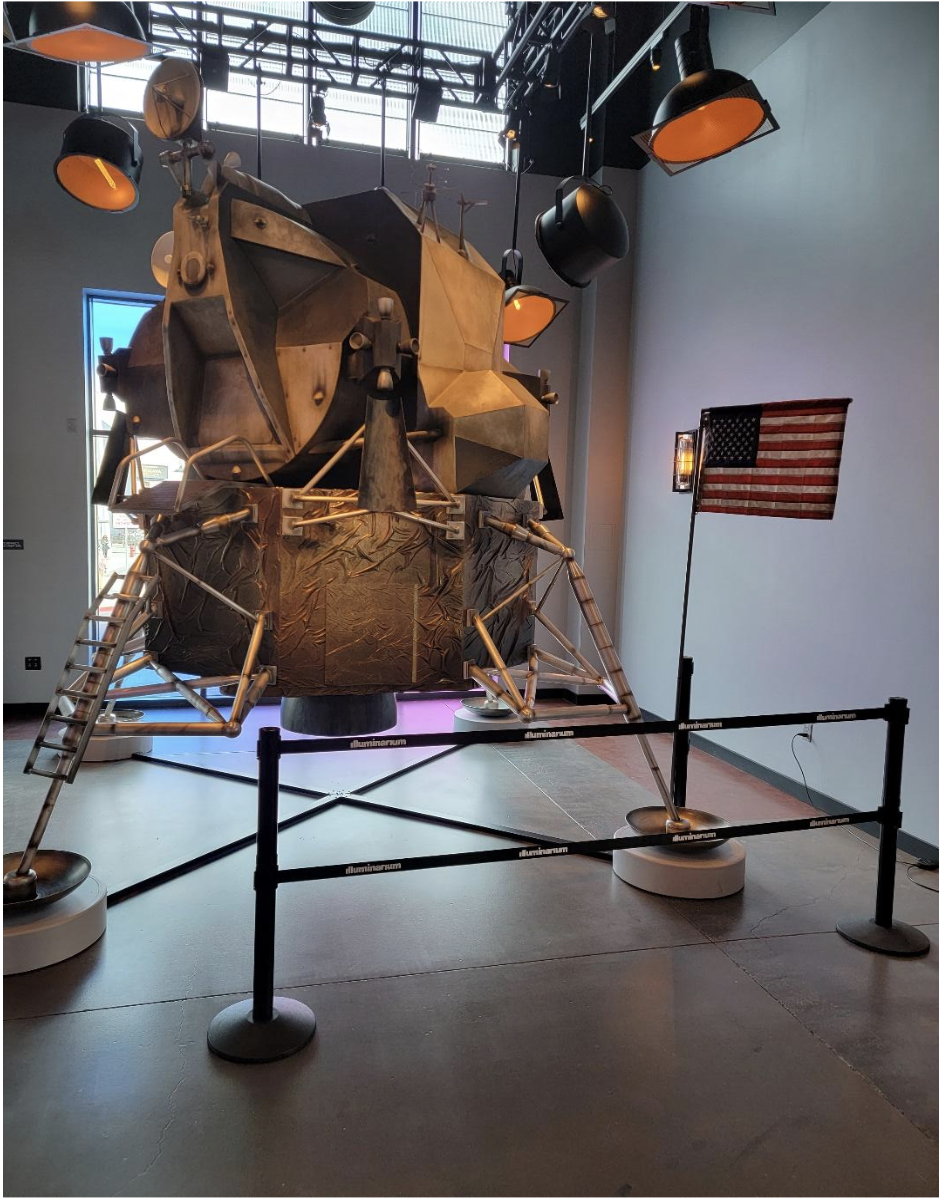A Successful Digital Signage Experience for Experiential Entertainment Centers
I remember going to Six Flags Great Adventure in New Jersey when I was a kid with my parents and sister. My father would drive through the safari section so we could watch the animals walk around or all over the car. I think the last time my parents drove through the safari section, one of the animals pulled the radio antenna right off the top of the car (like I said, the last time). My wife and I went many years ago (before the kids) and had a fantastic time on the water flume ride:

That all said, I attended a trade show (NAB) at the Las Vegas Convention Center in April 2022. Since I was only there for two days, I did not have a lot of time to find things to do, other than losing money at a casino. Since I knew about a new attraction that recently opened not too far from the convention center, I asked an associate, Peter Kim, to join me, and made our way to The Illuminarium to see, “WILD: A Safari Experience.”

While I didn’t have any specific expectations, I was very surprised to experience Africa in a unique way through cinematic content shot by the Illuminarium crew using custom camera arrays that provided a 240-degree native field of view (better than the average 210-degree human field of view). Fun fact: I learned the film crew took five trips over a five-month period to complete their shoot.
The Illuminarium combined and amplified techniques used in traditional motion-picture production and virtual reality that allows visitors to experience real-world filmed content in an immersive environment, without glasses or wearable equipment.
How It Works
All of this happens within a 360-by-360-foot canvas, across two large stages with each wall being 350 feet in length and 22 feet in height. The design of each stage includes curved walls and various pieces of furniture to sit on. There is a door that connects both environments together, so you literally walk from one experience to the next.
There are (42) state-of-the-art 4K laser projectors that transmit over 3 billion pixels to create a fully immersive experience.
The cameras and projectors share the same frame rate at 60fps.
There are over 5,000 speakers concealed behind acoustically transparent surfaces throughout the space, creating a 3D audio experience.
There is a unique 3D Lidar sensing system in the ceiling that detects thermal movement, triggering a more interactive and generative environment.
The 141 Haptic Movers underneath your feet deliver a localized low-frequency vibration experience that syncs perfectly with the aural scene around you. (For example, during the thunderstorm and lion’s roar, which if you were not aware, will shake you a bit and may cause a “little accident,” if you know what I mean.)
The Ambience
African artists created all the music, which was specifically designed for the Illuminarium Experience.
The subtle scent delivered in each environment was developed by the world’s leading olfactory experts to recreate the smell of the African landscape.
Live footage of 47 distinct animal species are included from four different countries — Kenya, Rwanda, South Africa, and Tanzania.
There are eight different environments:
- Birds and Beasts
- Featured: Great white pelicans and hippopotamuses
- Storm Chaser
- Features: Impalas, African buffalo, and white-headed vultures
- Safari Sunset
- Features: A cattle egret eating insects off a hippo, oblivious zebras, a Nile crocodile, and water rippling under your feet.
- Gorillas Colony
- Features: Mountain gorillas. (“Are you looking at me?”)
- Balanites Sunrise
- Features: Plains zebras, white rhinoceroses (looking and turning away) and small mongeese
- Animal Kingdom
- Features: Blue wildebeest, Central African warthog, vervet monkeys, helmeted guineafowl and olive baboons.
- New Heights
- Features: A lion enjoying lunch (below), meerkats and your footprints in the Kenyan earth (see video below).

- Great Grazers
- Features: A leopard in a tree (see below), southern ostriches and a baby elephant hiding behind its mother.

The Senses
So, how do you create an immersive and lasting impression to affect as many of the senses as possible without being overwhelming? Let me explain with a description of some of the parameters that were addressed specifically within this experience:
- Aural — animal sounds, human speech (via show guides and attendees such as myself exclaiming out loud after I heard and felt the thunder), sound effects, music, etc.
- Visual — primarily film footage, two instances of CGI (birds on the walls and butterflies on the floor) and some procedural animation.
- Non-Touch Interactive — using sensors to detect movement of entities or objects to trigger a change or activate a movement of content on a display or video wall.
- Touch Interactive — participants physically touch the floor to trigger additional procedural animation (i.e., footprints or rippling water).
- Olfaction — sense of smell that detects and discriminates odors that can influence our natural responses.
I had mentioned in my previous column, it’s critical to affect as many human senses as possible to create an overwhelmingly amazing experience for your attendees, so they tell their friends and family as well. After my time at The Illuminarium in Las Vegas, I have shared my experience with about 100 people, plus everyone who reads this column, as it was amazing and I am going back to see another (new) show after 7 p.m. called, “SPACE After Dark: An Experience Beyond Earth” which features the model below:
 It was also interesting to think that 50 years ago, there were only live animal experiences and now there is an immersive animal experiential center utilizing various types of technologies integrated into dual environments to provide a similar (and “safer”) adventure.
It was also interesting to think that 50 years ago, there were only live animal experiences and now there is an immersive animal experiential center utilizing various types of technologies integrated into dual environments to provide a similar (and “safer”) adventure.
Here is the latest link with helpful terms and definitions as you navigate this article.





